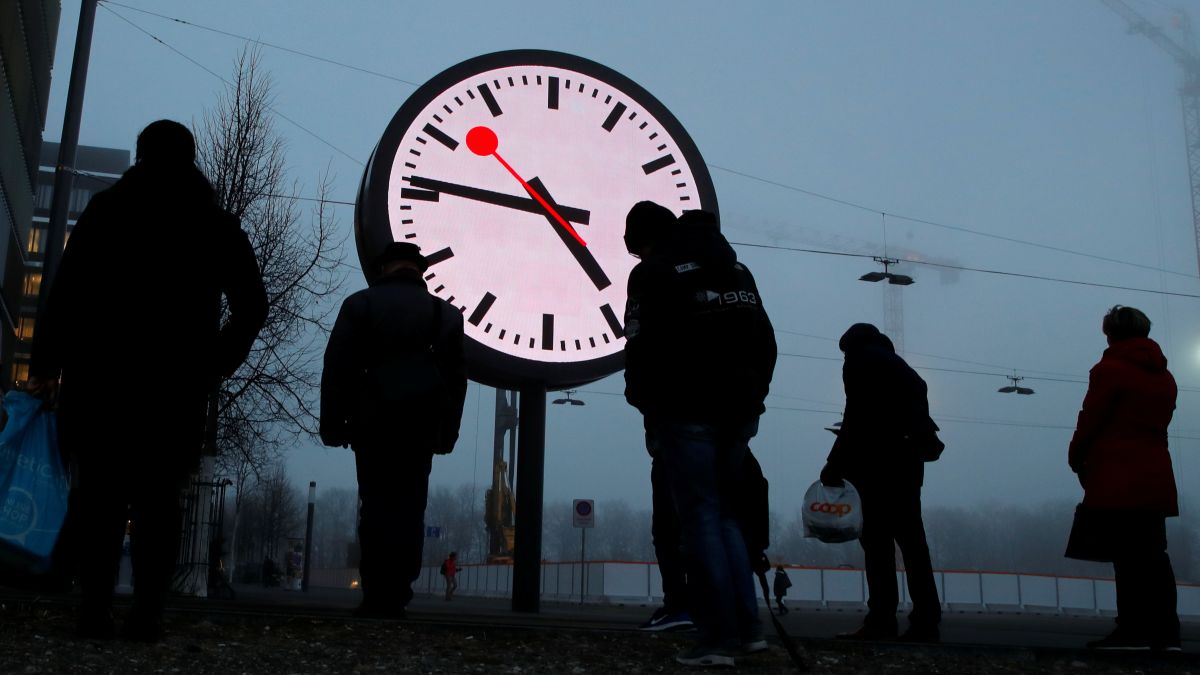The climate crisis, fuelled by human behaviour, has negative impacts on human health — it can increase the risk of heart disease as well as mental health conditions. Now, if a study is to be believed, it is also messing with time.
Before you scoff at the idea on how time could be affected by climate change, read on to find out how climate change is making days longer, and, in turn, affecting time.
Days get longer
A study by researchers from the Jet Propulsion Laboratory and ETH Zurich and published in the journal Proceedings of the National Academy of Sciences shows that the melting of the polar ice caps is causing our planet to spin more slowly, increasing the length of days at an “unprecedented” rate.
Expanding on the same, co-author Surendra Adhikari of NASA’s Jet Propulsion Laboratory said to AFP that water flowing from Greenland and Antarctica is resulting in more mass around the equator. “It’s like when a figure skater does a pirouette, first holding her arms close to her body and then stretching them out,” added co-author Benedikt Soja of ETH Zurich. “The initially fast rotation becomes slower because the masses move away from the axis of rotation, increasing physical inertia.”
But how is it that melting ice caps lead to longer days? In layman’s terms, the melting ice sheets at Greenland and the Antarctic have led to the redistribution of water stored at high latitudes into the world’s oceans, leading to more water in the seas nearer the equator. This makes the Earth more oblate – or fatter – slowing the rotation of the planet and lengthening the day still further.
Impact Shorts
More ShortsThe research team looked at data over a 200-year period, from 1900 to 2100 and used climate models to understand how climate change has affected day length in the past and to project its role in the future.
What they found was of great interest: Climate change-fuelled sea level rise caused the length of a day to vary between 0.3 and 1 milliseconds in the 20th Century. Over the past two decades, however, the scientists calculated an increase in day length of 1.33 milliseconds per century, “significantly higher than at any time in the 20th Century”.
The research revealed that if pollution continues, causing sea levels to rise, the rate of change is set to soar, increasing the length of a day by 2.62 milliseconds by the end of the century — overtaking the natural impacts of the moon.
Co-author Adhikari told CNN: “In barely 200 years, we will have altered the Earth’s climate system so much that we are witnessing its impact on the very way Earth spins.”
As per a Washington Post, some scientists aren’t surprised by the study. Richard Peltier, a physicist at the University of Toronto, published a study more than a decade ago stating “the changes in Earth rotation documented were caused by the global warming process.” Another recent study showed how this climate induced-day lengthening is affecting our timekeeping and delaying the leap second.
However, the new research shows climate change is a bigger influence than previously thought and projects how Earth’s rotation may continue to change, if global warming worsens.
Implications of added seconds
Researchers note that while additional milliseconds may not change day-to-day life for humans, the impact of it would be profound, mainly on timekeeping. Moreover, it can add hours over billions of years.
The team of scientists also noted that these additional seconds would have a significant impact on technology. Precise timekeeping is vital for GPS, which everyone with a smartphone will have, as well as other communication and navigation systems. These use highly precise atomic time, based on the frequency of certain atoms.
This could also impact space travel, said experts. They said that knowing the exact orientation of Earth at any given moment is crucial when attempting to communicate with a spaceship, where even a slight deviation of a centimetre could end up being kilometres off by the time it reaches its destination.
Ice caps melting
Scientists have noted that since the early 1900s, many glaciers around the world have been rapidly melting. Human activities are at the root of this phenomenon. Specifically, since the industrial revolution, carbon dioxide and other greenhouse gas emissions have raised temperatures, even higher in the poles, and as a result, glaciers are rapidly melting, calving off into the sea and retreating on land.
A study has shown that even if we significantly curb emissions in the coming decades, more than a third of the world’s remaining glaciers will melt before the year 2100.
And what could the melting of glaciers mean for us? Apart from messing with time, melting glaciers add to rising sea levels, which in turn increases coastal erosion and elevates storm surge as warming air and ocean temperatures create more frequent and intense coastal storms like hurricanes and typhoons.
Moreover, it will disrupt weather patterns worldwide. Industries that thrive on vibrant fisheries will be affected as warmer waters change where and when fish spawn. In the Arctic, as sea ice melts, wildlife like walrus are losing their home and polar bears are spending more time on land, causing higher rates of conflict between people and bears.
With inputs from agencies
)